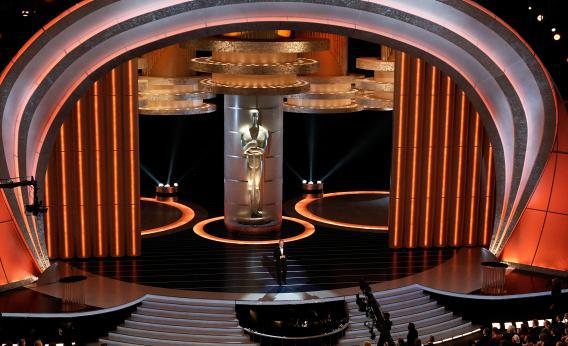After The Dark Knight was conspicuously absent from the Best Picture race at the 2009 Oscars, the academy decided to increase the number of possible nominees—which had been capped at five since 1945—to 10. A subsequent revision allowed for anywhere between five and 10 nominees, depending how many votes movies received. This move opened up the exclusive category to films that might not have gotten in before—including big box office hits. The theory seemed to be that if commercially and critically adored films like The Dark Knight were in the running for Best Picture, the TV rating for the ceremony would get a boost from their popularity. But does this theory actually hold up?
Pretty much. We took a look at the Oscar ratings data provided by the academy for every ceremony since 1976 and put them up against the estimated number of people who went to see the Best Picture nominees each year. To reach that estimated number, we added up the gross domestic totals of all the nominated movies and divided that by the average ticket price in each year. This is an imperfect gauge, of course, but it does roughly illustrate the popularity of a given slate of movies.
Ratings for the Oscar broadcast have been in a fairly steady decline over the last 35 years, but spikes have occurred when a blockbuster film was nominated: In 1998, when Titanic was nominated, the telecast rating jumped to 34.9, the highest since 1983, when E.T. was nominated in 1983. That broadcast got a 38 rating, the best in our sample.* The Best Picture nominees were seen by an estimated 22 million people that year. The following year, only 6 million saw the Oscar nominees, and the rating plunged to 30.3.
The 2008 Oscars was the lowest rated telecast in the 38 years we surveyed, at 18.7, and 2009 wasn’t much better with a 20.8. The next year, when Avatar was nominated, the rating rose to 23.1. Considering that the estimated attendance for the Best Picture movies jumped from 4.92 million to 22.74 million, that’s a pretty small increase. In a world where there is so much more to choose from on TV—not to mention the Internet—even popular blue aliens or men in dark capes may not be enough to make people sit through three hours of montages and speeches.
•
Correction, Feb. 25, 2013: Two of this article’s charts originally labeled 1976 as 1776 and 2006 as 2007.
Correction, Feb. 22, 2013: This article originally said that the 1998 Oscars telecast was the highest rated since 1978. In fact, the 1983 ceremony had higher ratings. (Return.)
